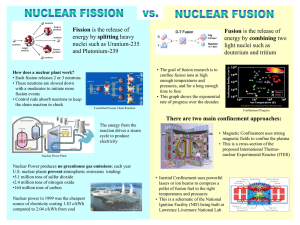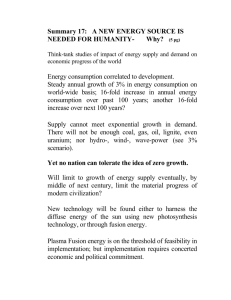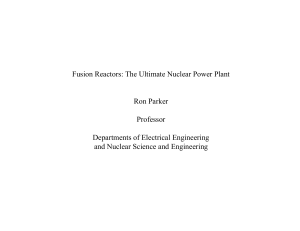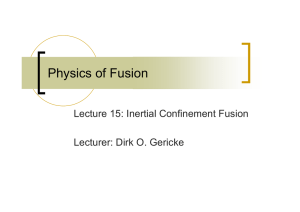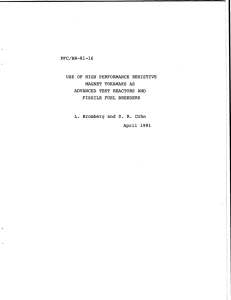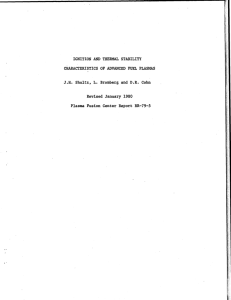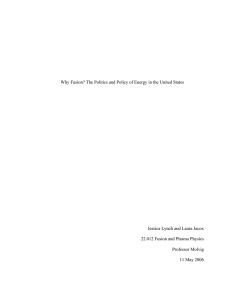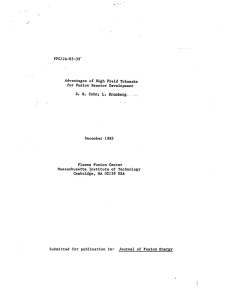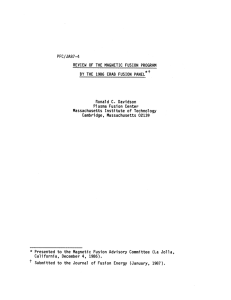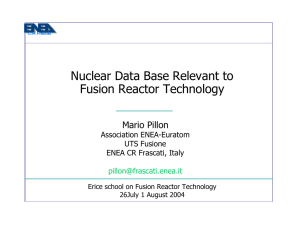Nuclear Fusion
advertisement
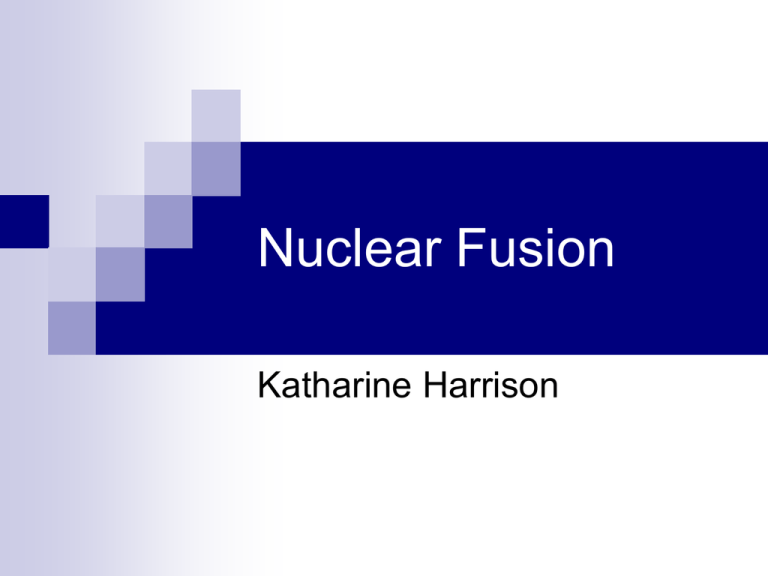
Nuclear Fusion Katharine Harrison Why Are We Interested? There are great challenges that are associated with fusion, but there are also very large possible benefits A coal power plant uses 9000 tons of coal a day to produce 1000 MW and emits many pollutants including 30,000 tons of carbon dioxide A fusion power plant would use 2.5 pounds of deuterium and tritium for the same amount of power and would emit only 2 pounds of helium The amount of lithium contained in a single computer battery along with about half of a bathtub full of water can produce as much energy as 40 tons of coal What is Nuclear Fusion? Fusion F F + + is the process of light atoms uniting to form heavier atoms This releases energy Nuclei are positively charged so they repel each other Energy has to be input to overcome this repulsive force How Would Fusion Work? 1/7000th of hydrogen on Earth is deuterium so it will be extracted from seawater Tritium will have to be bred on site Carry McCracken and Peter Stott. Fusion the Energy of the Universe. Birlington: Elsevier Academic Press, 2005. What are the Challenges? For fusion to occur, reactor temperatures would have to be on the order of 200 million degrees Celsius No material on earth can withstand 200 million degrees without melting Two basic strategies: 1) Magnetic Confinement: Confine the plasma with magnetic fields so that the plasma will not touch the containment walls 2) Inertial Confinement: Supply large amounts of energy very quickly (i.e. shoot with lasers) so that the fuel is burned before it has time to expand and touch the walls Magnetic Confinement: The Tokamak What has been done? Research has been going on since the 1940s Current research efforts are very internationally based The International Thermonuclear Experimental Reactor (ITER) will be built in France and is a collaboration between US, Europe, Japan, India, China, Russia, and Korea What is the Goal? Currently more energy has to be supplied to get the fusion reactions going than is output by fusion Breakeven is the point in which the energy supplied equals or exceeds the energy output Ignition is the point in which the energy from fusion supplies the heat necessary to sustain the reaction without external sources Will Fusion Work? The product of the energy confinement time and pressure of the plasma as a function of temperature is the critical criterion for ignition Breakeven has been reached Ignition is the goal of ITER E Carry McCracken and Peter Stott. Fusion the Energy of the Universe. Birlington: Elsevier Academic Press, 2005. Total Amount of Energy in the Plasma Rate of Energy Loss How Much Will Fusion Cost? ITER will cost between $10-12 billion over 20 years. Europe: 4/11th Japan: 2/11th US, India, China, Russia, Korea: 1/11th Is it Safe and Environmentally Friendly? Fission reactors could meltdown because the fuel is in the reactor at all times and the reaction must be stopped to cool the reactor down Fusion reactors cannot meltdown because there is very little fuel in the reactor at a time so to stop the reaction, the fuel valve can be closed or a “poison” valve can be opened to kill the reaction Fission produces radioactive waste that needs to decay for 10,000 years before it can be buried Neutrons cannot be confined in the magnetic field because they are uncharged so they will cause the first containment structure to be radioactive The structure will only need to be stored for 100 years and constitutes much less material than nuclear fission Questions?
